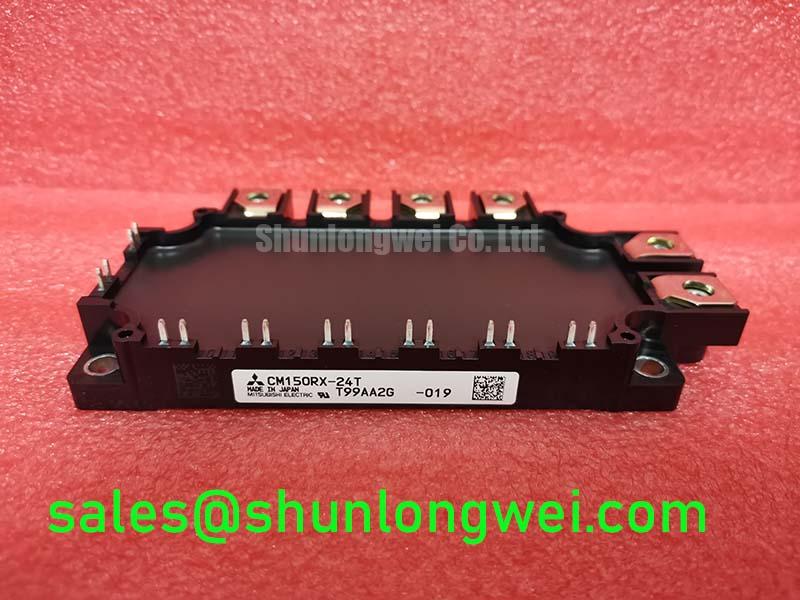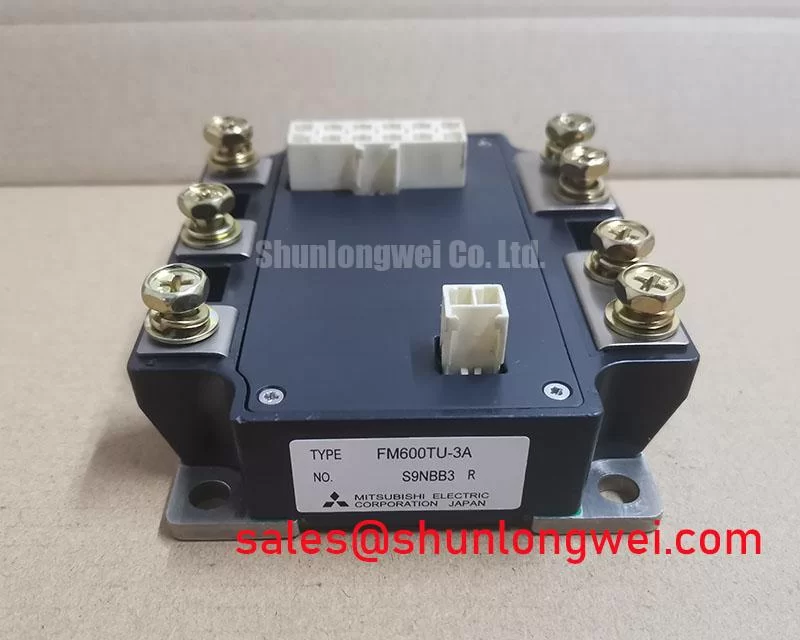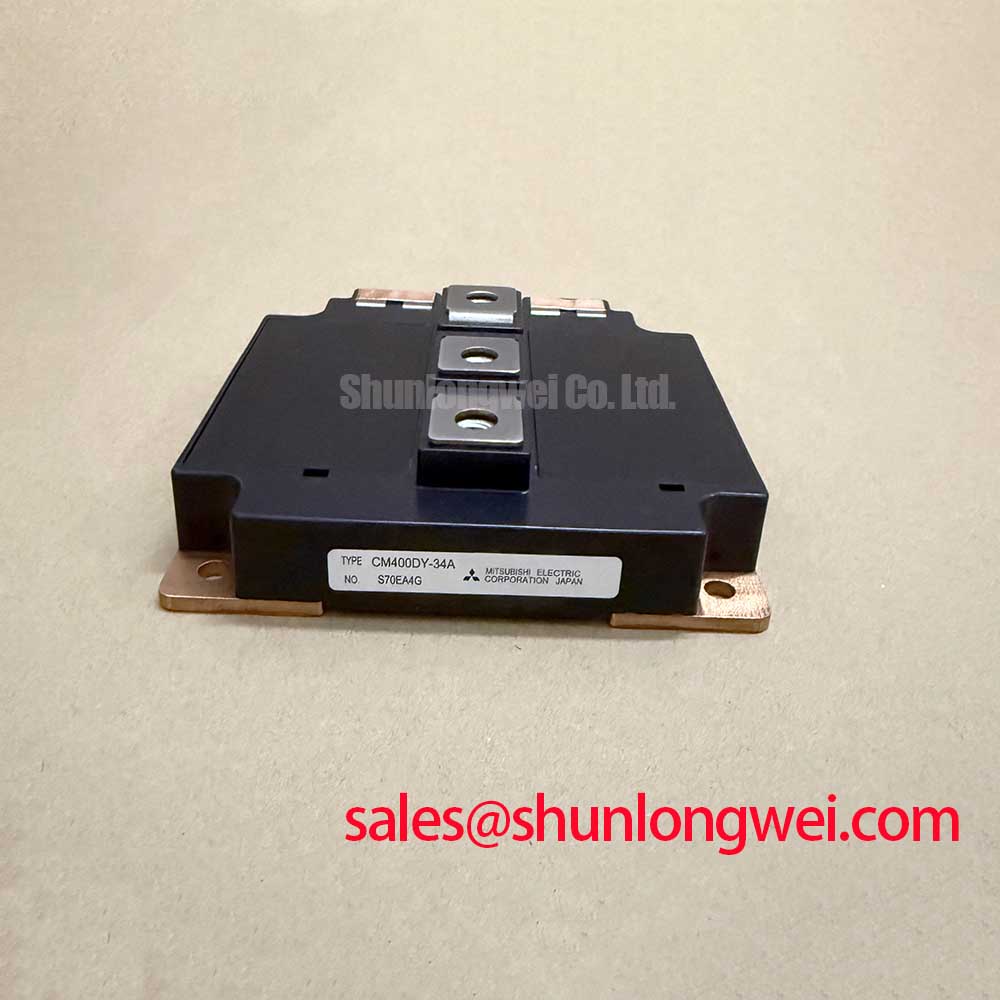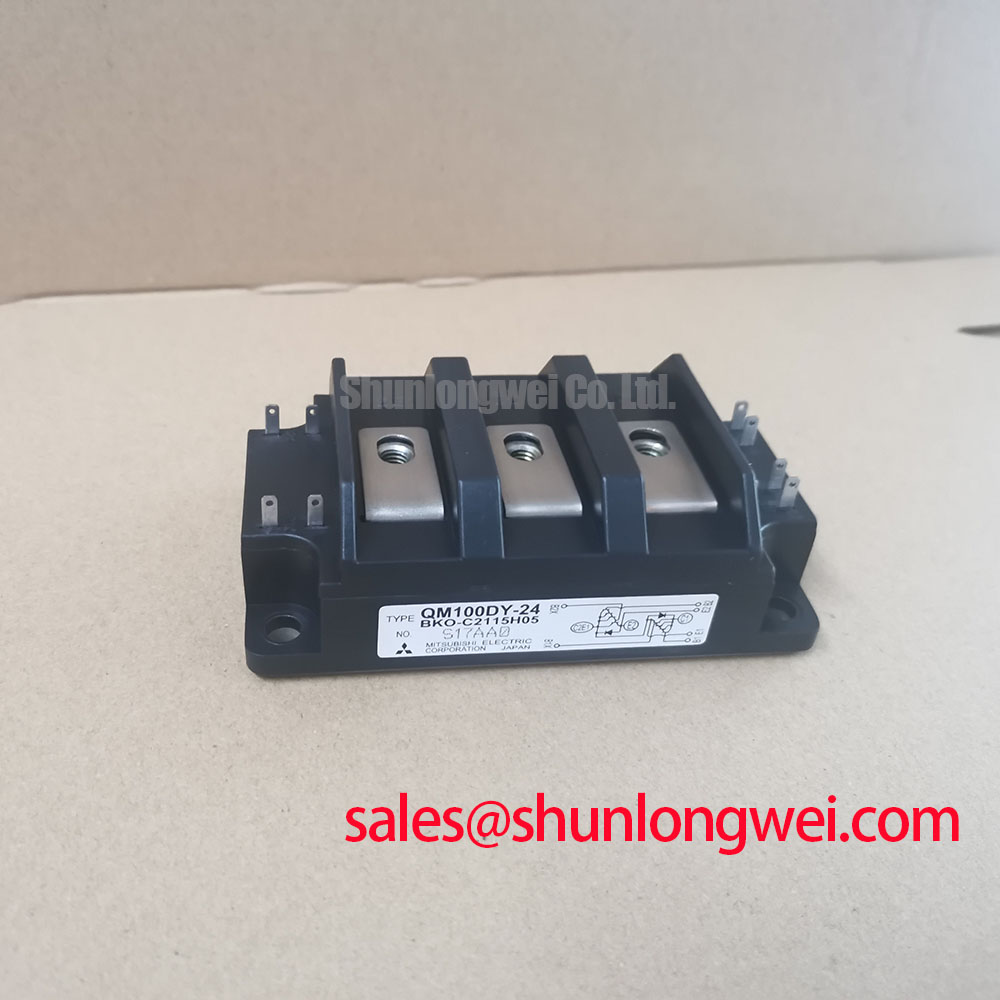Content last revised on November 13, 2025
Mitsubishi CM150RX-24T | High-Reliability 1200V IGBT for Demanding Inverter Applications
The Mitsubishi CM150RX-24T is an industry-standard 1200V, 150A single IGBT module engineered for high-power conversion systems where efficiency and long-term reliability are non-negotiable. Leveraging Mitsubishi's proven T-series chip technology, this module provides a robust building block for designers of motor drives, uninterruptible power supplies (UPS), and other demanding industrial applications.
Key Performance Highlights
- Voltage and Current Rating: 1200V Collector-Emitter Voltage (VCES) and 150A Collector Current (IC), making it ideal for 400/480VAC line applications.
- Low Conduction Loss: Features a low saturation voltage (VCE(sat)) of 1.75V (typical), which directly translates to reduced heat generation and higher system efficiency.
- Enhanced Thermal Performance: Built with an insulated metal baseplate for superior heat dissipation, ensuring stable operation under heavy loads.
- Robust and Reliable: Incorporates a soft-recovery free-wheeling diode (FWD) and demonstrates excellent short-circuit withstand capability, crucial for fault-tolerant designs.
Technical Specifications at a Glance
For engineers requiring precise data for simulation and design, the following parameters are critical. For a comprehensive overview, you can Download the Datasheet.
| Parameter | Value |
|---|---|
| Collector-Emitter Voltage (VCES) | 1200V |
| Collector Current (IC) @ TC=25°C | 150A |
| Collector-Emitter Saturation Voltage (VCE(sat)) @ IC=150A | 1.75V (typ.), 2.30V (max.) |
| Total Power Dissipation (PC) @ TC=25°C | 830W |
| Operating Junction Temperature (Tj(op)) | -40 to +150°C |
| Thermal Resistance (Rth(j-c)) IGBT | 0.15 K/W |
Engineering Deep Dive: The CSTBT™ Advantage
At the heart of the CM150RX-24T is Mitsubishi's CSTBT™ (Carrier Stored Trench-Gate Bipolar Transistor) technology. This sophisticated chip structure represents a significant evolution in IGBT design. Unlike conventional trench-gate structures, CSTBT™ incorporates an additional n-type carrier storage layer beneath the p-base. During the on-state, this layer accumulates carriers, significantly reducing the drift region's resistance. The direct engineering benefit is a substantial reduction in the collector-emitter saturation voltage (VCE(sat)), which is a primary source of conduction losses in high-current applications. For a design engineer, this means less power wasted as heat, allowing for a smaller heatsink, reduced system cost, and improved overall energy efficiency.
This advanced chip technology, combined with a robust package design, allows the Mitsubishi CM150RX-24T to offer a finely tuned balance between low conduction losses and controlled switching behavior. This helps simplify snubber circuit design and manage electromagnetic interference (EMI), a critical consideration in modern power electronics. For a deeper understanding of IGBT construction, explore our guide on the hybrid structure and technology of IGBTs.
Application Suitability: Where the CM150RX-24T Excels
The performance characteristics of this module make it a versatile and reliable choice for several high-power applications:
- Industrial Motor Drives: In Variable Frequency Drives (VFDs), the low VCE(sat) directly improves the drive's efficiency, reducing operating costs over the equipment's lifetime. Its thermal stability ensures consistent performance in demanding factory environments.
- Uninterruptible Power Supplies (UPS): Reliability is paramount in UPS systems. The CM150RX-24T's proven ruggedness and high surge current capability provide the necessary resilience to handle load transients and ensure continuous, clean power.
- Welding Power Supplies: The module's fast and soft switching characteristics enable precise control over the welding arc, leading to higher quality welds. The robust thermal management is essential to withstand the intense, cyclical loads typical of welding processes.
- Renewable Energy Inverters: Suitable for the DC-AC inverter stage in solar or wind power systems, where maximizing energy conversion efficiency is the primary design goal.
Frequently Asked Engineering Questions
What are the key considerations for the gate drive design for the CM150RX-24T?
A stable, low-impedance gate drive circuit is crucial for optimal performance. We recommend a gate voltage of +15V for turn-on and a negative voltage of -10V to -15V for turn-off. The negative bias provides a strong defense against parasitic turn-on caused by Miller capacitance (dv/dt), enhancing system immunity to noise. Ensure the gate driver can supply sufficient peak current (as specified in the datasheet) to charge and discharge the gate capacitance quickly, minimizing switching losses. For more information, see our 5 practical tips for robust IGBT gate drive design.
How does this single IGBT module compare to a six-pack module for a 3-phase inverter?
The CM150RX-24T is a single-switch module, meaning six would be required to build a standard 3-phase inverter bridge. This modular approach offers significant design flexibility in terms of layout and thermal management. Engineers can optimize the physical placement of each switch and its corresponding heatsink, potentially leading to a more thermally balanced and compact system compared to a single, large six-pack module. This also simplifies maintenance, as a single failed switch can be replaced without discarding the entire power stage.
For detailed selection advice or to discuss your specific application needs, please contact our technical team.














